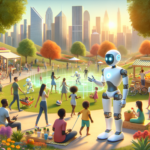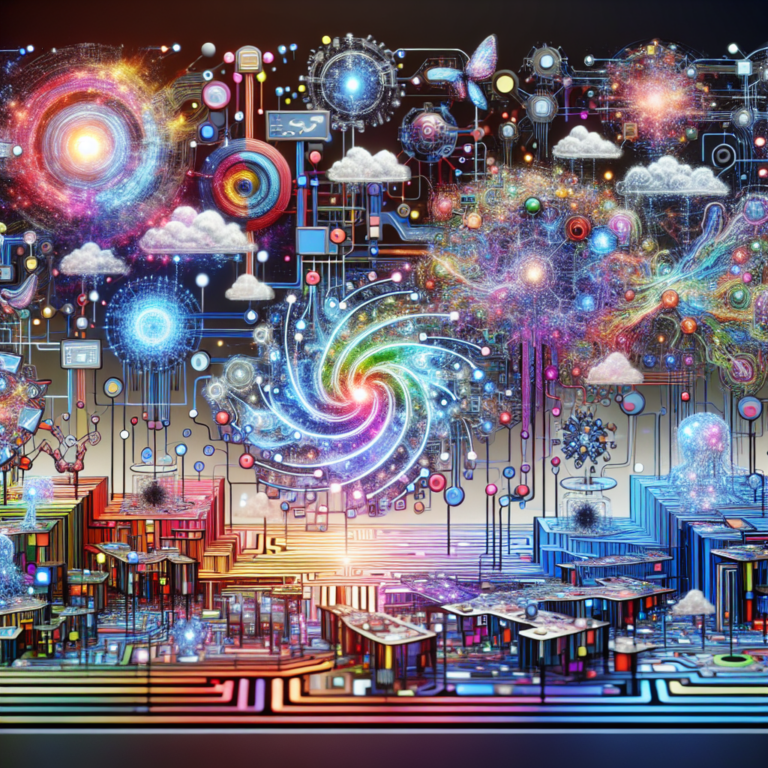Unlocking the Potential of Multi-Agent AI for Complex Challenges
The advent of Multi-Agent AI has transformed the landscape of artificial intelligence, especially in overcoming complex challenges that traditional systems face. While large language models (LLMs) like ChatGPT have popularized AI across various sectors, the inherent limitations of LLMs necessitate a more sophisticated approach to problem-solving.
Challenges of Large Language Models (LLMs)
Large language models have gained traction for two main reasons:
- Comprehensive Knowledge Resource: Models like GPT-3, GPT-3.5, and GPT-4 draw from extensive datasets, providing a well of information.
- Emergent Capabilities: As these models advance, they exhibit advanced abilities that simpler models lack.
However, these advancements raise questions about achieving artificial general intelligence (AGI). AGI represents a form of AI capable of understanding, learning, and applying knowledge across diverse tasks. LLMs often fall short due to their auto-regressive nature, which can lead to inaccuracies. The limitations include:
- Limited Insight: Despite vast data training, LLMs struggle with real-time knowledge.
- Restricted Logical Reasoning: LLMs perform well at knowledge retrieval but falter with complex reasoning tasks.
- Lack of Dynamic Interaction: Being static, LLMs cannot access or utilize real-time data.
Introducing Multi-Agent Systems
To effectively navigate the challenges presented by LLMs, agents offer a promising solution. Multi-Agent AI systems leverage the strengths of LLMs by combining them with other components to tackle complex problems. Here’s how agents complement traditional models:
Essential Components of Multi-Agent AI
- Tools: Agents utilize various tools to fetch real-time data from the internet, databases, and APIs, broadening their information horizon.
- Memory: Multi-Agent AIs can possess short-term and long-term memory capabilities, with scratchpad memory for temporary data and chat history serving as long-term memory.
- Reasoning: Agents incorporate reasoning components to process information effectively, breaking down complex tasks into achievable subtasks.
- Actionable Outputs: Based on their environment and reasoning, agents take actions that facilitate iterative learning and problem-solving.
Advantages of Multi-Agent Systems
Employing a multi-agent approach excels in managing intricate tasks. For instance, in blog creation, separate agents can focus on research and writing, thereby pursuing distinct goals. This collaboration maximizes efficiency and minimizes errors related to unclear outputs—often called hallucinations.
Effective Role-Playing in Multi-Agent Collaboration
By explicitly defining roles within the multi-agent system, teams can streamline their objectives, thus enhancing output quality. Various structured frameworks exist to facilitate this process, ensuring that agents interact in a manner that reduces confusion and enhances coherence.
Comparing Single-Agent and Multi-Agent Systems
In scenarios involving retrieval-augmented generation (RAG), single-agent setups present certain limitations. Although they allow LLMs to process domain-specific queries, they may struggle with aspects like document retrieval and ranking. In contrast, multi-agent RAG addresses these vulnerabilities by assigning specialized roles to different agents, improving overall efficiency.
Multi-agent configurations enable agents to collaborate in varied ways—sequentially, centrally, or decentralizing tasks to enhance performance. Solutions like CrewAI and langGraph+langChain exemplify how to implement complex problem-solving using multi-agent systems.
Multi-Agent Systems in Workflow Management
Effective management of workflows, such as in loan processing or campaign management, is crucial in numerous industries. Ordinarily, each task in a workflow demands a significant amount of human effort. However, employing a multi-agent approach, like CrewAI, allows various agents to collaborate across different workflow components. For example, in the loan verification process, one agent could authenticate user identity while another evaluates financial records.
This setup raises an interesting question: Can a single crew of agents handle all workflow steps? While it is feasible, managing numerous responsibilities may complicate crew structures, leading to performance challenges. A more effective strategy splits the workflow into smaller, manageable crews, utilizing tools like langGraph for streamlined operation.
Although achieving complete autonomy is still a future goal, maintaining a human-in-the-loop approach at crucial junctures ensures accuracy. As AI continues to advance, certain tasks within workflows will become fully automated, thereby optimizing processes and saving time.
Challenges in Implementing Multi-Agent AI
Adopting multi-agent solutions in production presents unique challenges:
- Scalability: As the agent count grows, coordinating their efforts can become increasingly complex. Scalable frameworks such as Llamaindex help manage multiple agents effectively.
- Latency: The iterative nature of agent task execution can introduce latency, particularly with managed LLMs compared to self-hosted options.
- Inconsistencies and Hallucinations: The probabilistic nature of LLMs can lead to variable performance. Techniques such as output templating and strategic prompt examples help reduce these inconsistencies and the risk of hallucinations.
As the field of Multi-Agent AI evolves, these systems will be instrumental in bridging the divide between the current capabilities of LLMs and the future of artificial general intelligence. The integration of multi-agent frameworks will significantly enhance problem-solving in numerous applications and industries.




0 Comments